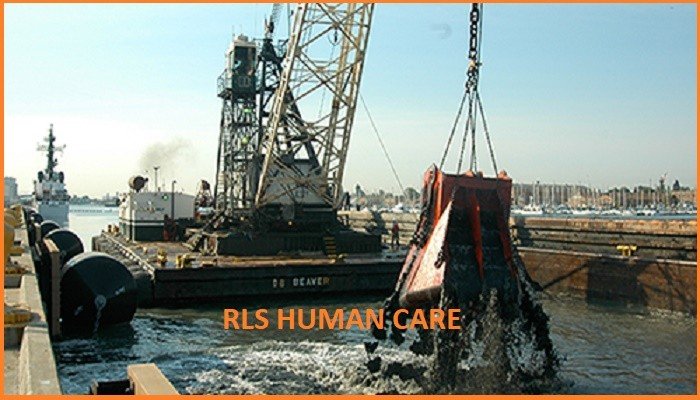Mechanical handling is defined as the movement of goods by mechanical force for the purpose of feeding, loading or unloading to or from a machine, plant or storage place, to or from a means of transport such as a vehicle, ships or air transport.
The equipment employed may be powered by electromagnetic hydraulic or pneumatic energy.
Main hazards of mechanical handling contact with moving dangerous parts (pulley-belts, gears, in-running nips, couplings, etc.), falling from the height or on the floor, striking against or struck by falling bodies.
Contents
Factors affecting the selection of means of handling and lifting are:
- Weight of material
- Shape of material
- Size of material
- Physical and chemical character of the material
- Rate of handling
- Purpose and distance of moving
- Obstacles if any
- The structural condition of the floor
- Pathway and direction of movement
Use of the main mechanical handling equipment are given below:
Types of lifting equipment

| Equipment | Useful for |
| Electric Over Travelling crane (EOT) | Lifting, shifting and placing anywhere in the traveling area. |
| Jib Crane (Mobile) Gantry crane | Lifting and shifting at desired places. |
| Power trucks | Three or four-wheeler truck to pick, hold and carry (transport) material. Useful in making piles, stacking and unstacking. |
| Conveyors | Transporting/Carrying material between two fixed points. Useful as a feeding device where manual feeding is unsafe. Workers should not ride on conveyors. |
| Lifting tackles | They are rings and slings (chain or rope, metal or fiber), hooks, shackles, and swivels. They are used to connect load or container to any lifting device. |
| Fork Lift Truck | It is a power truck having projecting fork to pick, hold, carry and unload (replace) the material or container. Maybe power-driven or battery operated. Conveniently used on the smooth floor. |
| Pay loaders, shovels, Winch crab, Pullers and Hydraulic?Pneumatic jacks | Used to dig, lift and transport heavy material. Well trained operators, supervision and good maintenance are necessary. |
| Lift and Elevators | Move vertical, horizontal or in any unilateral direction (cable path) between two fixed points, lift vertically and carry material or persons. A cage or cabin must travel in a fixed path and well enclosed. Interlocked doors/gates necessary. |
| Hoists | Hoists are of Four types: Hydraulic, Pneumatic, Electric, and hand-operated chain hoists. A chain hoist is of three types – Spur geared, Differential and screw geared. The Spur geared type is most efficient. Push-button cable must be supported by a chain to protect against strain. |
| Mono-rails | Should be well supported on both ends like a hanging bridge. The chain pully block or hoist mounted on it should move freely. Stops must be provided at both the ends. Useful to lift load and carry horizontally between two fixed points. |
Also, read this:
Safety in Rigging and Erection operations
24 Safety checks to perform before putting your crane in operation





